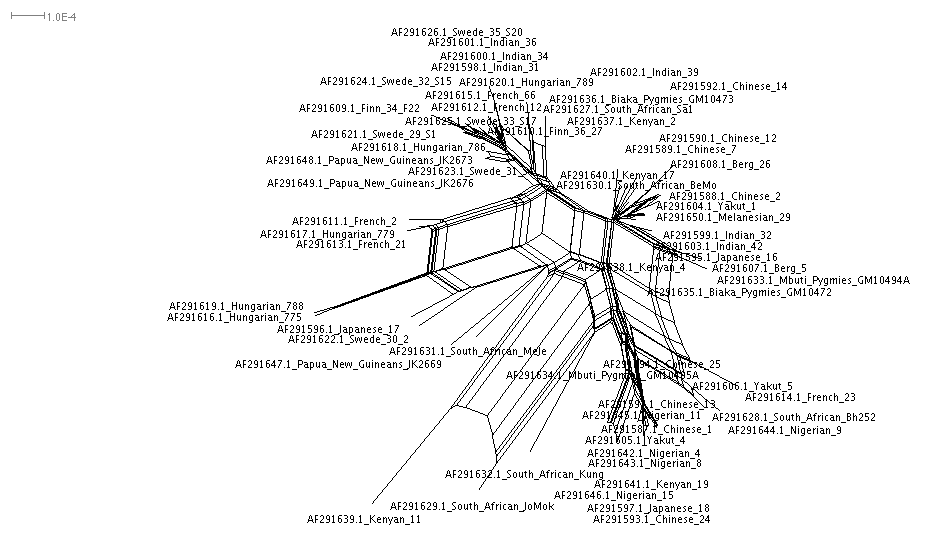Hi @Swamidass thank you for contributing some substantial and substantive posts to this discussion in the past few days. Sorry that I have not acknowledged your presence here sooner. Because my time available for this discussion is very limited, I have had to prioritise responding to Dennis as he has invested more in this discussion than anyone else. I have therefore been making a lot of the use of the website function that allows me to only see Dennis’s posts, so many of the other posts I have not even read, let alone had time to engage with (though I would like to have done, were there not so many demands on my time). However, your posts have now come to my attention and I will just make a few comments. I will try to restrict myself to your points most narrowly focused on the points I have raised, as I don’t have time to comment on everything you have said. Many of your comments and observations I agree with, and I appreciate the peaceable nature of your contributions, and your occupation of the middle ground between Dennis and myself.
Hear, hear!
This is exactly my point. Thank you for stating it so concisely. To my mind, the way ahead would be to write a programme that computes the TMR4A for each haplotype block of the human genome, and work out a reasonable time frame using data from all blocks. Until that has been done, I do not think we can say that the bottleneck hypothesis has been rigorously tested.
I am glad that you agree with my back-of-the-envelope calculations, and my conclusions from that. I am interested that when you add in recombination you get a potentially shorter time to a primordial pair. I would also be glad to hear what you think of the rest of my post, where I suggest that if the population continued to expand from a single couple up to 7 billion individuals, then the time to a primordial pair could be lower than 500,000 years. All in all, it seems to me that the jury is still out on a minimum bound for a bottleneck.
I agree that more rigorous treatment is desirable. However eyeballing the data can be a useful heuristic in illustrating a point and deciding what ideas to follow up. The clustering that I did of the Zhao et al (2000) sequences shows that one can reasonably place them into clusters, and that not every possible combination of the variants are found in that data. If you prefer, here is a haplotype network for the whole Zhao et al (2000) dataset:
Looking at this - “eyeballing” again! - there are clear clusters with fairly recent common ancestors.Agreed. So not every haplotype block in the human population today would have its TMR4A at the bottleneck (if one occurred) - some would have them at a more recent date, due to earlier loss of ancestral haplotypes. Just looking at such blocks in isolation would give a misleadingly young age for a bottleneck.
I think we are planning to come on to linkage disequilibrium in this discussion, one we come to the Tenesa et al paper.[quote=“Swamidass, post:254, topic:37039”]
Is this conversation assuming common descent?
[/quote]
Absolutely[quote=“Swamidass, post:260, topic:37039”]
Btw, I think the strongest evidence against a bottleneck in the last 6 million years is trans-species variation,
[/quote]
I agree. I am assuming we would come to this in detail at some point.[quote=“Swamidass, post:260, topic:37039”]
None of the conclusions Dennis presented are disputed in mainstream science either. So he is not so much “making the case” but explaining what others have found. The evidential standards are just much much lower for that type of activity. He did not thing wrong by quoting a selection of papers.
[/quote]
Here I disagree with you, sorry! Most mainstream papers have not tested the bottleneck hypothesis. As you have said, the “Time to Most Recent 4 Alleles (TMR4A)… is not a standard computed number in genetics”. To test a bottleneck of two hypothesis, this is what is needed. There is quite a lot of interpretation going on by Dennis. Take the Zhao et al paper: Dennis is not making a point that the authors are making. This is to a greater or lesser extent the same for the other papers he cites in Adam and the Genome, as I have shown in my blog. Also, and this is just a minor point, the Zhao et al paper was not cited in Adam and the Genome: Dennis has cited it in this discussion to back up a passage which has no citations in Adam and the Genome. I would also note that thus far, no mainstream scientist has disputed my blog which has been read by many scientists.
Thanks again for your input. The time I can give to this discussion today is up. It is 10pm my time and I need to wake my baby son to have his final feed for the day!
